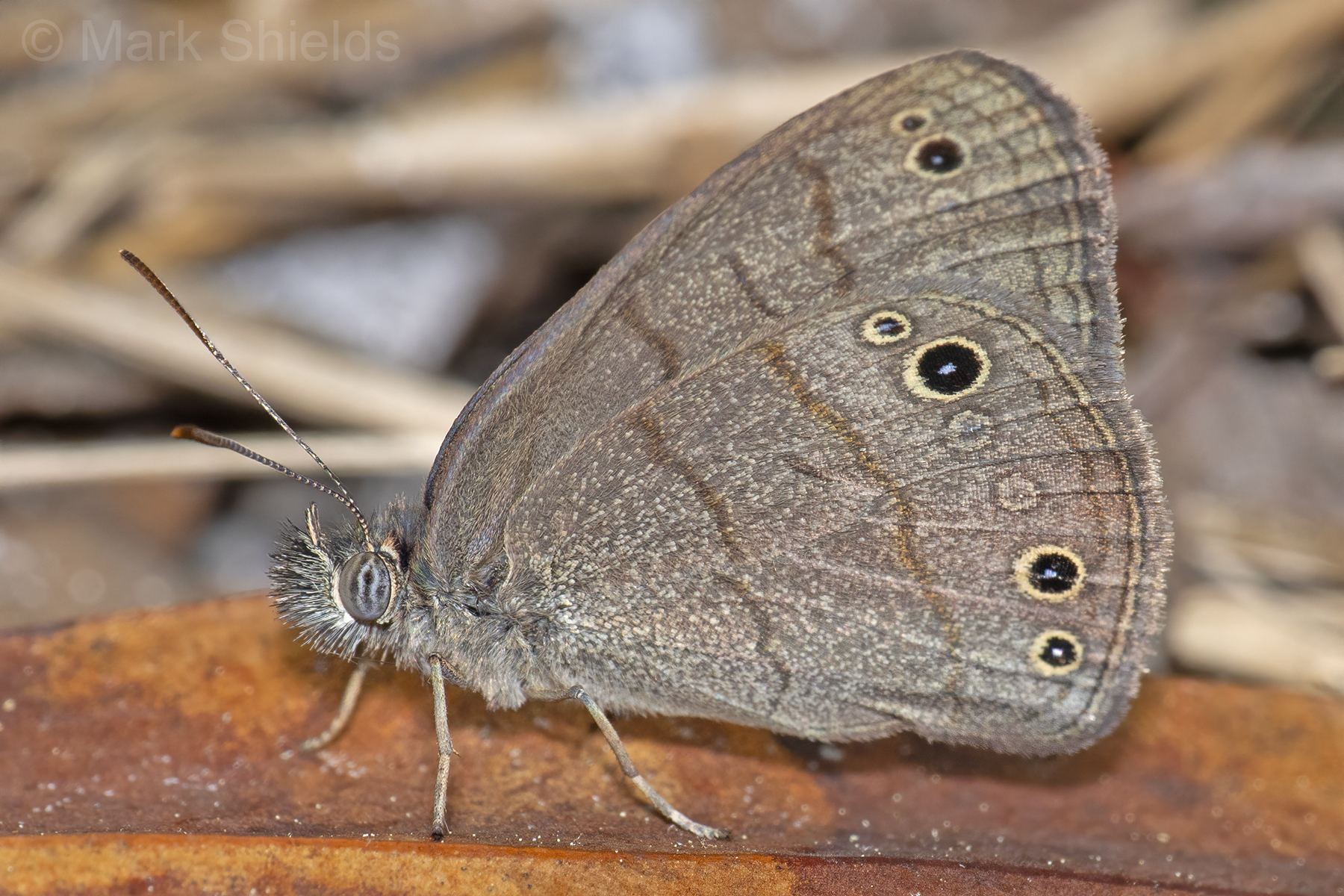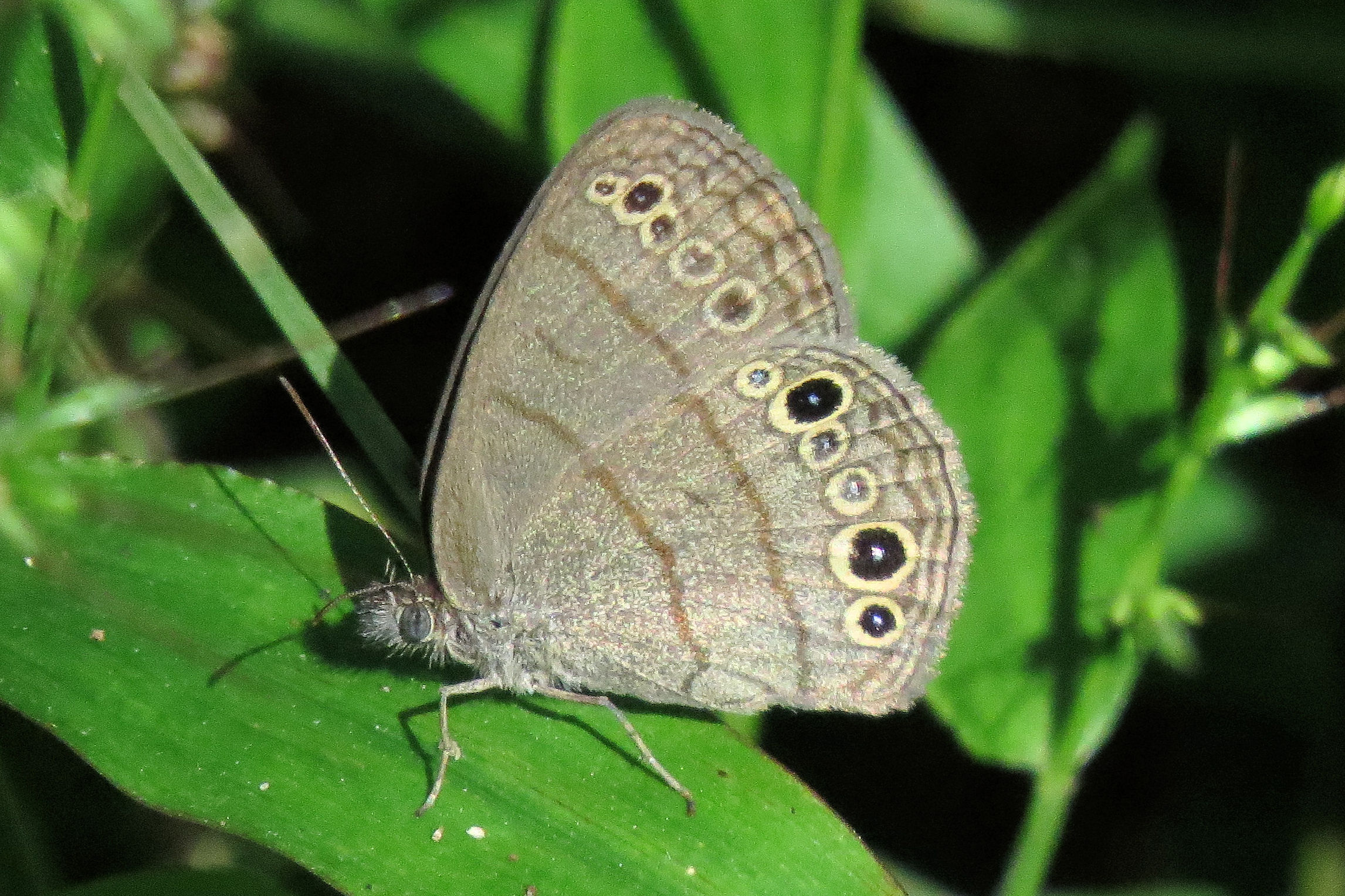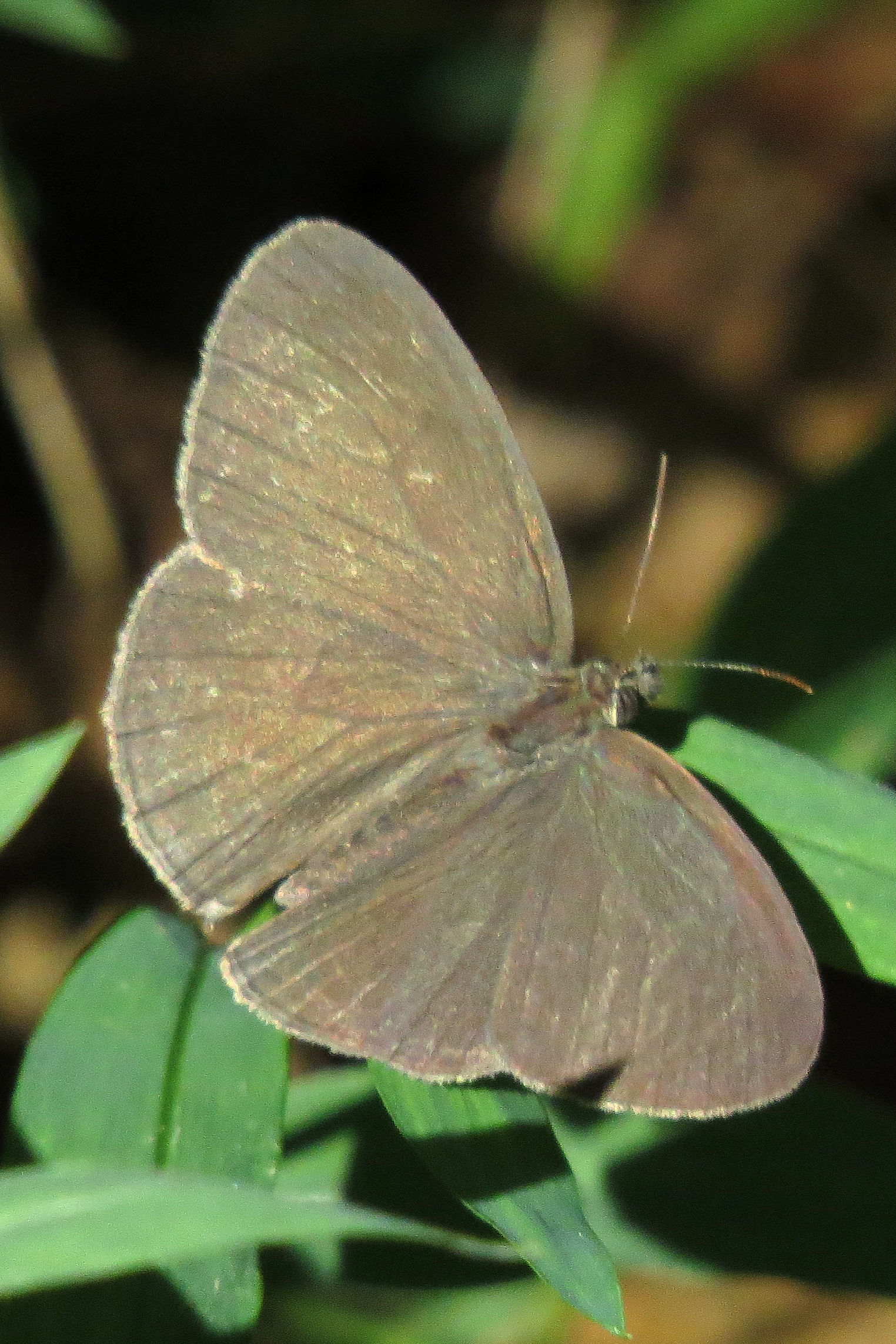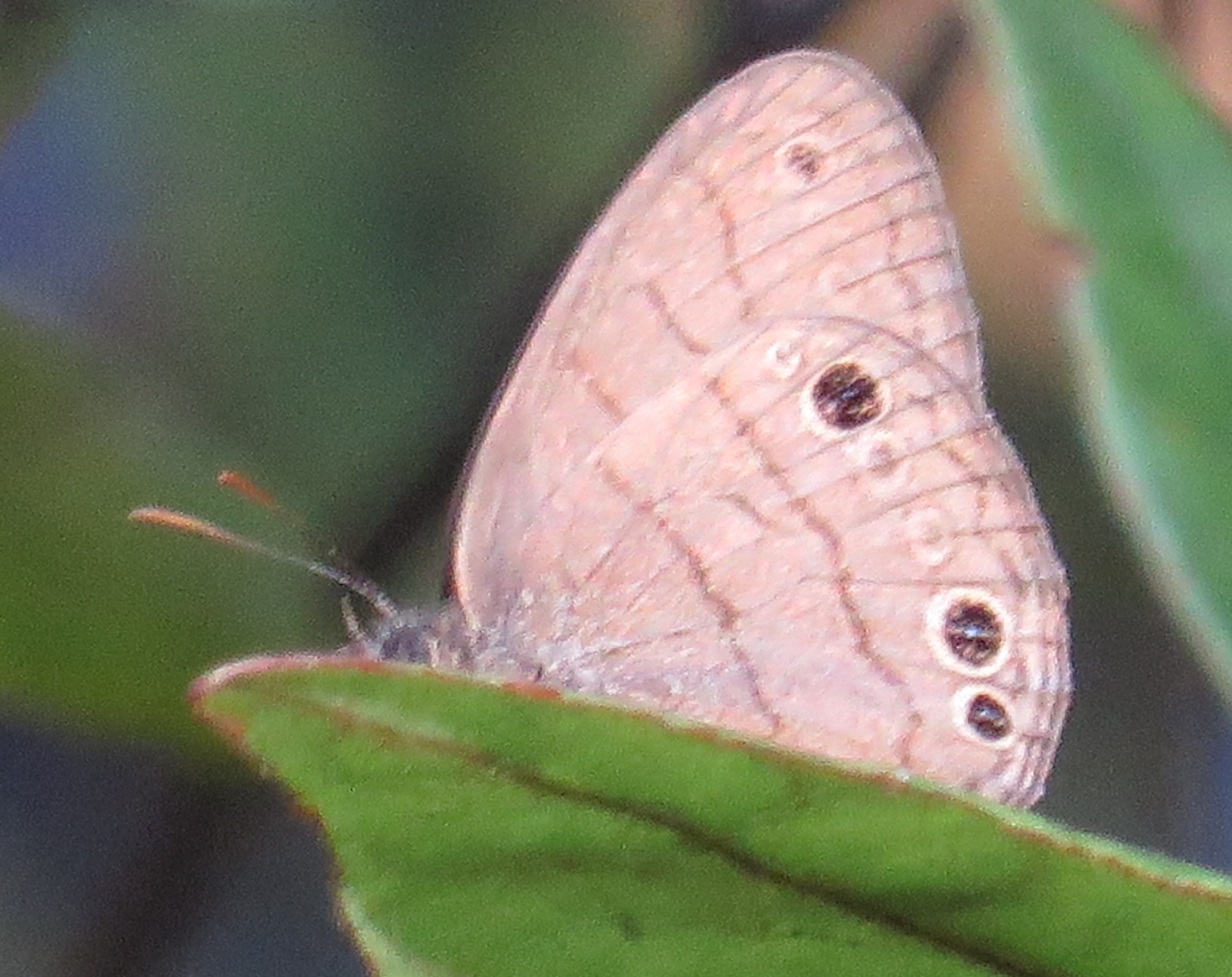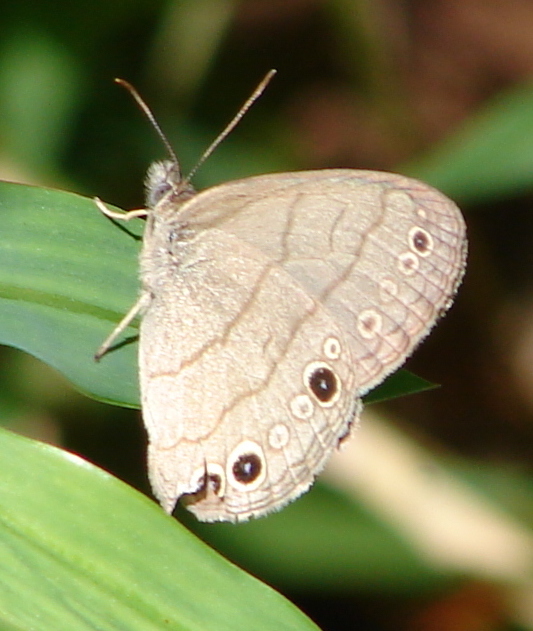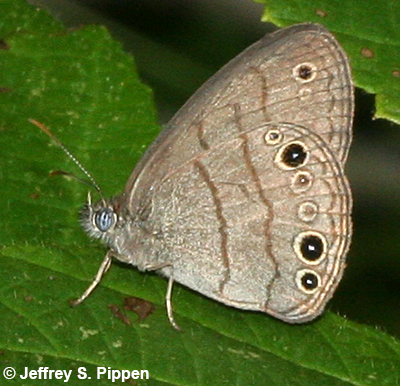|
| Common Name | Intricate Satyr by Mark Shields => Robeson Co. 7 Aug 2020
[View PDF]
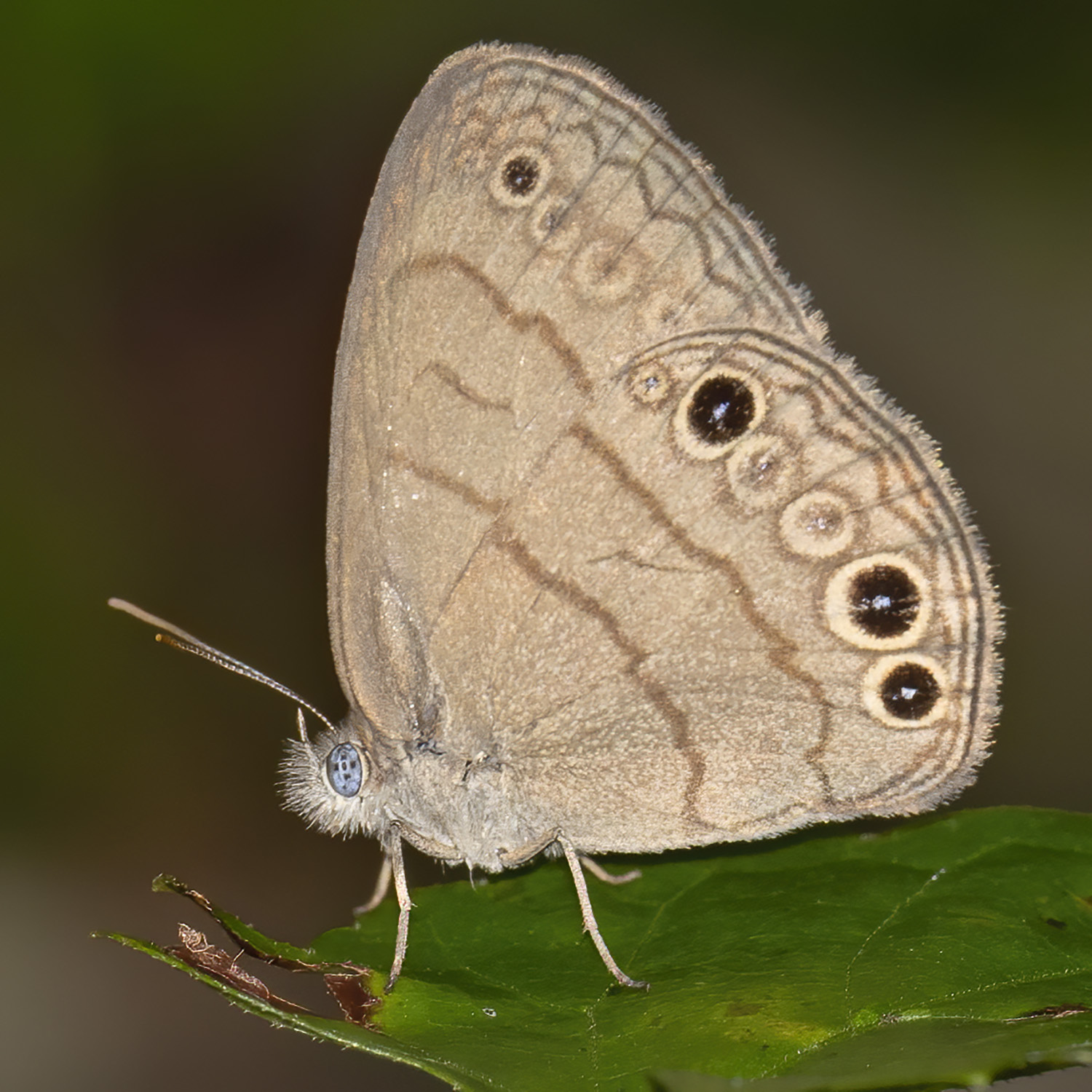 Click to enlarge Click to enlarge
[Google Images] GBIF [Global Distribution ] BoA [Images ] iNaturalist |
| Scientific Name | Hermeuptychia intricata
|
| Link to BAMONA species account. |
| Map | Click on a county for list of all database records for the species in that county.
 |
| Distribution | DISTRIBUTION: This species was described only in early 2014, with specimen review and determinations made only in March 2014. So far it is known from specimens and photos from Beaufort and Pitt counties southward in the Coastal Plain, plus a handful of eastern and southern Piedmont counties. A photo from the Mountains (Buncombe County) has been considered valid by Tom Austin, an expert on the species. Though there appear to be no verified records for VA as yet, the species should occur north to the VA border, if indeed the Vance County record is correct.
|
| Abundance | ABUNDANCE: Andy Warren at the University of FL's McGuire Center has found that the great majority of the specimens of the genus Hermeuptychia in that collection are Carolina Satyrs, with Intricate Satyrs being relatively scarce. The NC abundance is very poorly known, as this is a recently described species, based on specimen work. Four Intricate Satyrs were collected at a single site in Jones County in 1971, and thus it might not be rare, at least locally, in NC. At this same location, in August 2016, Jeff Pippen, Jim Brock, Steve Moore, and I saw about 20 individuals, with several photographed by Pippen for confirmation (by Andy Warren). Tom Austin (in SC) has studied the species widely in the Carolinas and feels that it is not uncommon in the lower Coastal Plain, at least locally; probably rare to uncommon in the upper Coastal Plain (including the Sandhills), and probably very rare to rare in the eastern/southern Piedmont west into the lower Mountains. This website and the N.C. Natural Heritage Program give the species a State Rank of S3?. NatureServe's Global Rank is simply GNR (Not Yet Ranked).
|
| Flight | FLIGHT PERIOD: The specimen and photo records for NC so far are from late March to mid-May, early to late July, and many from early August to mid-September. This suggests three broods; most records are for the last brood, though that may be owing to field work intensity at that time of year. It is expected to fly in much of April and May, for at least a month in midsummer, and through most of August and September, especially as the Carolina Satyr has much wider flight periods.
|
| Habitat | HABITAT: Mesic to moist hardwood or mixed forests, overlapping habitats used by Carolina Satyrs. Tom Austin indicates that this species tends to occur in richer and more diverse hardwood forests than does the Carolina Satyr, which can occur in pinelands and mixed forests, as well as moist hardwood forests dominated by cane (Arundinaria spp.) and/or Japanese Stilt-grass (Microstegium vimineum). Carolinas definitely occur in more acidic forests, on average, than do Intricates, which are more often found in higher quality and less wet forests.
|
| Plants | FOOD AND NECTAR PLANTS: Observations by Tom Austin in SC suggest that rosette grasses (genus Dichanthelium) are a primary foodplant for the species there. At the Jones County site, Longleaf Spikegrass (Chasmanthium sessiliflorum) is abundant and is the most conspicuous grass there; thus, it is a suspected foodplant. However, it was not determined whether rosette grasses are present at the Jones County site and, if so, how abundant they are. As with other satyrs, adults seldom nectar, but feed on moisture, carrion, fruits, etc.
|
| Comments | COMMENTS: The paper describing the Intricate Satyr, and a second new satyr from TX into MX, only came out in early 2014 (Zookeys [379] 43-91), by Cong and Grishin. Pelham (2023) considers the species as valid; this website follows his checklist for taxonomy. Warren has found that male specimens of Intricate Satyr in the FL collection (based on genitalia) have the upper wing surface evenly colored brown, if not slightly darker toward the margin than toward the base. In general, Carolina Satyr specimens tend to be slightly paler around and near the margins and slightly to noticeably darker at the bases. Also, the post-median band on the hind wing of Intricate Satyr is normally straight at the coastal end and does not bend inward away from the top large black eyespot; in Carolina, the band does bend inward away from this eyespot. Thankfully, Austin has noted behavioral differences in SC: Carolina Satyrs are difficult to approach, such as within 5 feet, and they take flight easily; whereas Intricate Satyrs are less skittish and are easier to photograph. He says that Intricates thus resemble Gemmed Satyrs in flight, which are slightly slower in flight than are Carolinas.
|
State Rank | S3? | | State Status | W |
Global Rank | GNR | | Federal Status | |
| Synonym |
|
| Other Name |
|
|
|

 >>
>>
